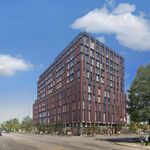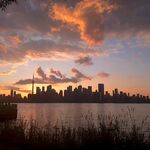There's an interesting counter-argument to planned urban sprawl in the Globe and Mail today. Certainly warrants a read and opens the table for more discussion.
http://www.theglobeandmail.com/glob...t-about-unaffordable-housing/article22607554/
What’s so smart about unaffordable housing?
KONRAD YAKABUSKI
The Globe and Mail
Published Monday, Jan. 26 2015, 3:00 AM EST
Last updated Monday, Jan. 26 2015, 3:00 AM EST
Of all the lofty attributes Canada’s world-class cities have touted in recent years, making a home unaffordable for average folks is perhaps the least enviable. It was also avoidable. But self-proclaimed “smart growth†policies have proven the opposite of smart, contributing to an affordability crisis with little to show in the way of a cleaner environment.
The biggest losers are millennials now entering their 30s, a generation urban planners and creative-class types predicted would always prefer downtown living over the suburbs. For these echo boomers, moving up to a single- or semi-detached home to raise a family is no longer even an option. Bringing up junior in a 600-square-foot condo is not as cool as it might sound. Yet that’s the choice many face.
Vancouver is considered the world’s second-most unaffordable housing market, after Hong Kong. A median-priced Vancouver home costs 10.6 times the city’s median household income, according to the latest Demographia International Housing Affordability Survey. Vancouver’s price-to-income ratio has doubled in the past decade.
At 6.5 times income, Toronto’s house price-to-income ratio has risen 65 per cent over the same period. Demographia defines a multiple above 5.1 as “severely unaffordable.†Toronto is now even more unaffordable than New York.
Even those who think they can afford homes now may be fooling themselves. Record-low interest rates have slashed the carrying cost of a mortgage, but in doing so have masked what remains an unsustainably high price-to-income ratio.
Interest rates are virtually the same everywhere, but not every city has unaffordable housing. The economy is healthier in some cities than others. But Houston and Dallas are booming (or were, until oil prices collapsed) and they have among the most affordable houses in the world. They had no prerecession housing bubble, so no housing crash either.
What separates the most affordable cites, according to Demographia, is the absence of policies against urban sprawl, such as Ontario’s 10-year-old Greenbelt Plan and B.C.’s Agricultural Land Reserve. Other anti-sprawl laws, such as Ontario’s 2005 Place to Grow Act, have promoted densification and limited development to existing transportation corridors.
Demographia, a think tank critical of densification policies, says that “no major metropolitan market without urban containment policy has ever been rated with severely unaffordable housing.†It adds that “strong restrictions on land supply drive up the cost of housing, which reduces the standard of living.â€
Smart growth advocates bristle at that suggestion. The Pembina Institute insists that 81 per cent of the land available for development around Toronto will still be unused by 2031. But that’s in part because anti-sprawl laws have sent land prices soaring. As a new TD Economics study notes, “landowners continue to hold on to significant idle land, likely with the aim of earning a higher profit on sale due to appreciating values.â€
The biggest myth about anti-sprawl policies is that they’re good for the environment – that they preserve scarce land for farming while encouraging a reduction in greenhouse gas emissions. But there is no scarcity of agricultural land in Southern Ontario, while squeezing development into narrow corridors has led to traffic congestion (Vancouver’s roads are tied with those of Los Angeles as the most clogged in North America) and higher carbon emissions from longer commutes.
Any carbon reduction that does occur comes at an exorbitant cost. Demographia consultant Wendell Cox pegs the cost of reducing a single tonne of emissions at nearly $20,000 (U.S.), when accounting for the impact of densification policies on housing prices. Clearly, there are more cost-effective ways to cut emissions.
And what about the millennials? The condo booms in Vancouver and Toronto reflect not only the echo generation’s current preference for downtown living, but the fact that a tiny box in the sky is often their only financial option. But as they age, millennials are just as likely as their elders to crave space.
“The millennial ‘flight’ from suburbia has not only been vastly overexaggerated, it fails to deal with what may best be seen as differences in preferences correlated with life stages,†insists noted U.S. demographer Joel Kotkin, adding that “people with children tend to avoid urban cores, even in the most gentrified environments.â€
In Toronto and Vancouver, anyway, millennials are stuck. Smart growth policies have priced most of them out of a home in which to raise a family. Just what’s so smart about that?








